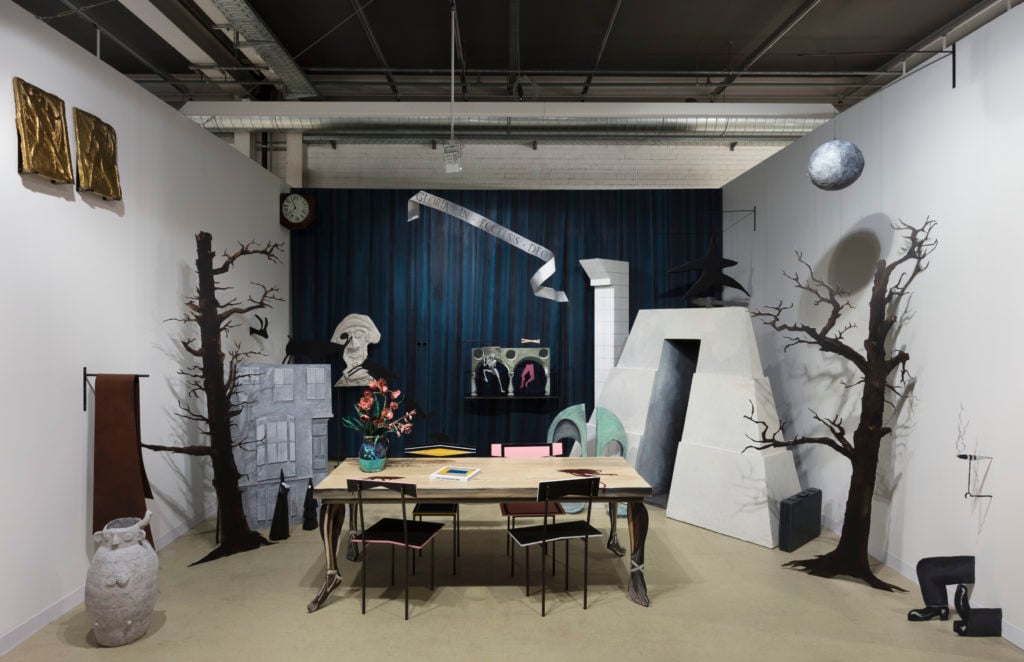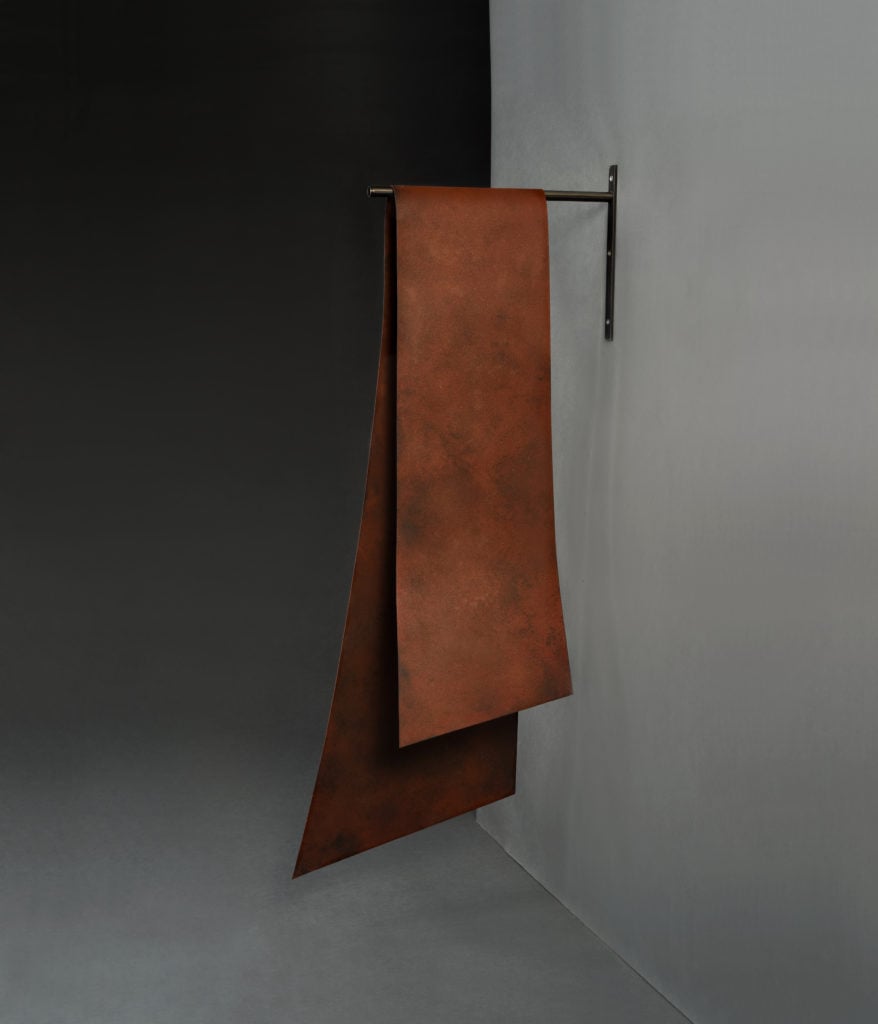Art World
An Artist Has Recreated Famous Lost Artworks for Art Basel—and They Will Disappear Again Before the Fair Is Over
Alvaro Urbano's works are on view for a limited time only.

Alvaro Urbano's works are on view for a limited time only.

Tim Schneider

Not all artworks are designed to tell a story. But they can’t help becoming stories if they suddenly disappear.
Madrid-born, Berlin-based artist Alvaro Urbano brings this idea to mischievous life in Art Basel’s Statements section this year. His installation at Berlin gallery ChertLüdde’s booth, titled Ever Since Night Falls, features 29 sculptural interpretations of artworks lost, stolen, or destroyed throughout history.
The catch? More of them will disappear from view every day of the fair.
Unlike the vanished works that inspired Urbano, however, his pieces will all disappear by the same mechanism: the advancing movement of a painting depicting a midnight blue curtain that stretches across the stand’s back wall. After the fair closes each night, Urbano and the gallery reposition the “curtain” a few meters closer to the booth’s entrance, plunging additional works into darkness. (Except, that is, for what viewers can still make out through a set of peepholes cut into the middle of the painting.)
“What struck me were the stories,” Urbano told artnet News on the fair’s opening day. He spent four months researching and creating the works—an uncharacteristically long period of time, according to the artist. “They are ghosts,” Urbano said of the lost works. “Because they don’t exist, you have to treat them with tenderness.”
The stories told by these ghosts include tragic accidents and overt criminality, personal reinventions and public controversies. One work is a foam and papier-mâché stand-in for one of the estimated 20 million artworks and artifacts incinerated when Brazil’s National Museum went up in flames in September 2018.

Alvaro Urbano, Ever Since Night Falls (Tilted Arc, Richard Serra, 1981)), 2019. Photography by Trevor Lloyd. Courtesy of the artist and ChertLüdde.
Another honors the stolen luggage that held dozens of On Kawara’s I Got Up works, postcards that he stamped with the titular phrase and the time he rose from bed, then sent to friends and family members every day for years. The theft was such a blow to Kawara that he discontinued the series immediately afterward.
Crucially, these are interpretations, not replicas. Urbano produced the entire series as sculptures, even when the lost works were actually paintings or drawings. There is a dose of humor to the installation. One sculpture calls back to Richard Serra’s infamous Tilted Arc—which was installed in Manhattan’s Foley Federal Plaza in 1981 but eventually removed after a public backlash—by rendering the work in miniature as a flaccid metal strip draped over a wall-mounted rod like a wet towel.
Apart from a handful of sculptures designed as a set with the curtain, the others are sold individually for prices ranging from €5,000 to €15,000.
Will their availability have any influence on whether viewers will be able to see them from one day to the next? “No, it makes no difference,” answered Florian Lüdde, one of the gallery’s partners, with a knowing smirk. “That would just be weird.”
Beyond each work’s position within the installation, there is no greater rhyme or reason to the order in which they will disappear. Urbano made this decision in part to reflect the element of chance that makes people, objects, and history so fragile. It’s an unexpectedly poetic message at a major art fair, but it’s one that Ever Since Night Falls delivers with a refreshingly light touch. Just be aware that the touch gets a little lighter every day.